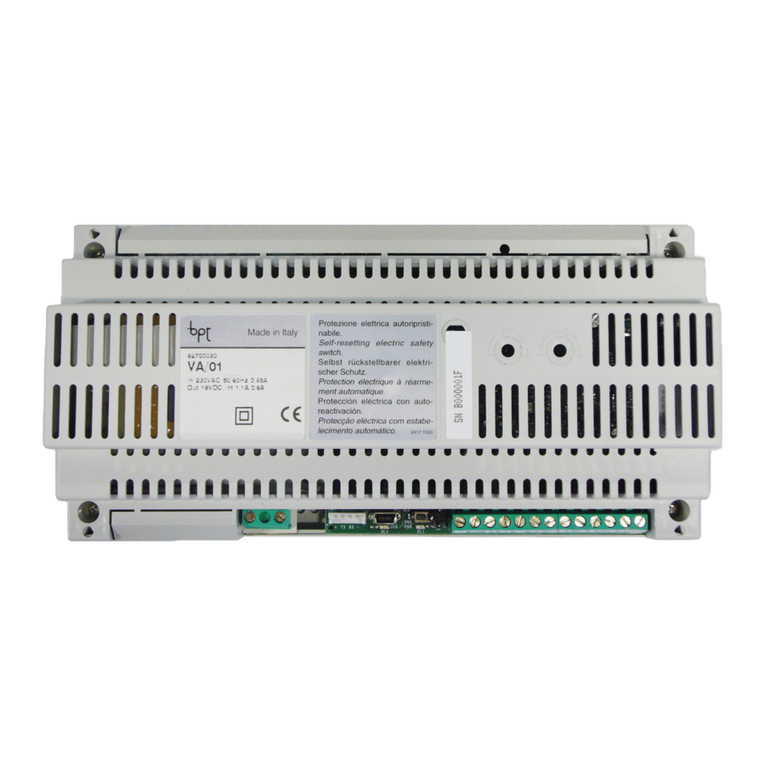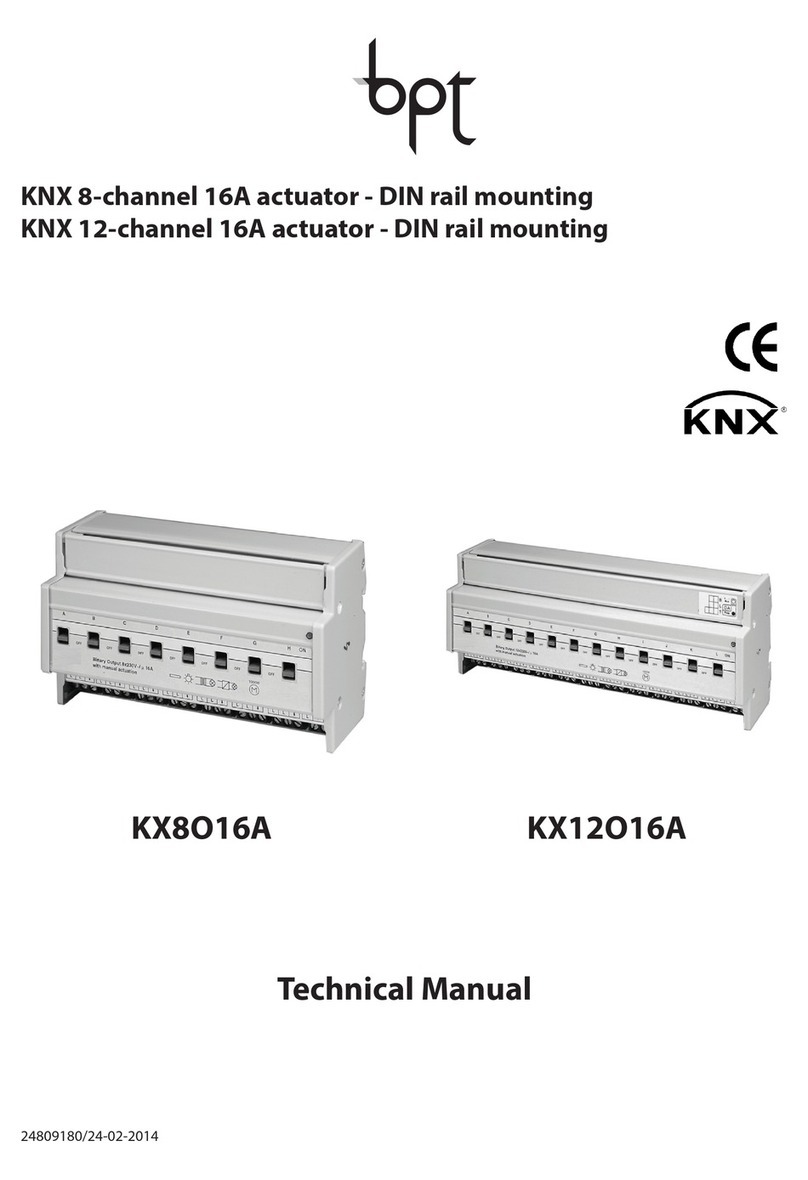
-+
-
+
bus
U
L
N.O.
U
LN.O.
U
L
N.O. LN.O.
U
NN
NN
NL
A
B
C
Uscita relè 1 -Output relay 1 - Sortie relais 1 -
Salida relé 1 - Relaisausgang 1
Uscita relè 2 -Output relay 2 - Sortie relais 2 -
Salida relé 2 - Relaisausgang 2
Pulsante comando locale relè 1 -Relay 1 local
command button -
Bouton-poussoir de commande
locale du relais 1
-Pulsador mando local de relé 1
- Lokaler Relaissteuertaster 1
LED stato relè 1 -Relay 1 status LED - LED état du
relais 1 -LED de estado de relé 1 - LED Relaisstatus
1
Pulsante comando locale relè 2 -Relay 2 local
command button -
Bouton-poussoir de commande
locale du relais 2
- Pulsador mando local de relé 2
- Lokaler Relaissteuertaster 2
LED stato relè 2 -Relay 2 status LED - LED état du
relais 2 - LED de estado de relé 2 - LED
Relaisstatus 2
LED stato relè 3
-
Relay 3 status LED - LED état du
relais 3 - LED de estado de relé 3 - LED
Relaisstatus 3
Pulsante comando locale relè 3
-
Relay 3 local
command button -
Bouton-poussoir de commande
locale du relais 3
-Pulsador mando local de relé 3
- Lokaler Relaissteuertaster 3
LED di programmazione indirizzo fisico - LED for
programming p ysical address - LED de
programmation de l’adresse physique - LED de
programación de dirección física - LED für die
Programmierung der physikalischen Adresse
Tasto di programmazione indirizzo fisico - Button
key for programming p ysical address - Touche de
programmation de l’adresse physique - Tecla de
programación de dirección física - Taste fur die
Programmierung der physikalischen Adresse
LED stato relè 4 -Relay 4 status LED - LED état du
relais 4 - LED de estado de relé 4 - LED
Relaisstatus 4
Pulsante comando locale relè 4 -Relay 4 local
command button -
Bouton-poussoir de commande
locale du relais 4
-Pulsador mando local de relé 4
- Lokaler Relaissteuertaster 4`
Uscita relè 3 -Output relay 3 - Sortie du relais
3 - Salida relé 3 - Relaisausgang 3
Uscita relè 4 -Output relay 4 - Sortie du relais
4- Salida relé 4 - Relaisausgang 4
Terminali bus -Bus terminals - Bornes du bus-
Conectores bus - Busanschlüsse
Alimentazione ausiliaria 230 ac -Auxiliary 230Vac
-
Alimentación auxiliar 230 Vca - 230VAC-Hilfsversorgung
2
1
3
4
5
6
1
6
7
8
4
5
3
8
7
9
2
13 14 15
12
10
9
10
11
12
13
14
15
11
16
16





























